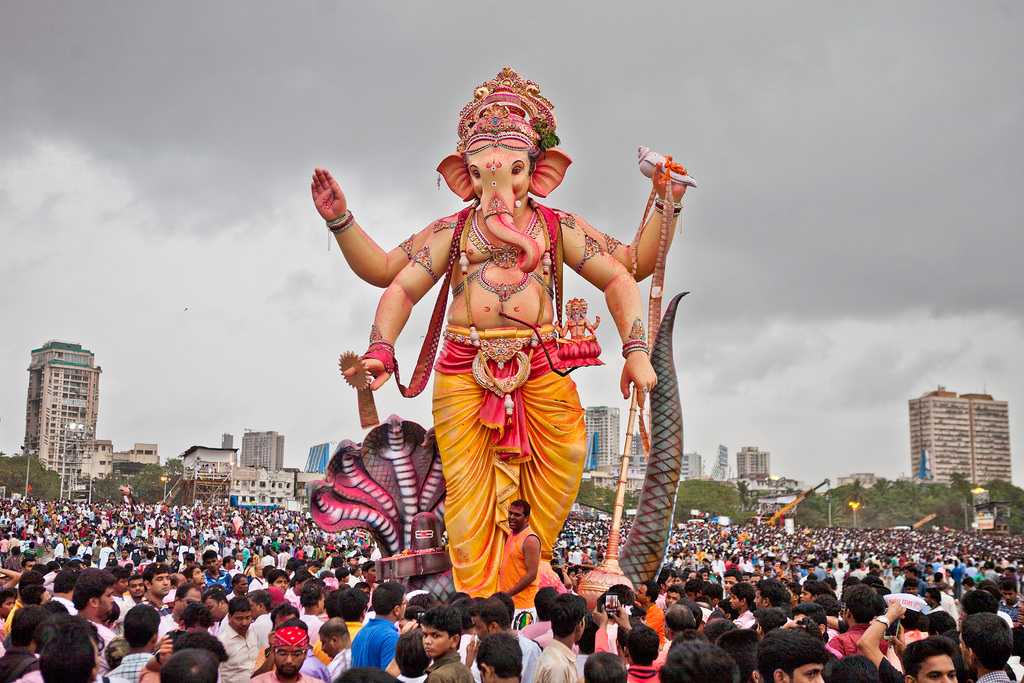Maharashtra is not only known for its natural beauty and historical landmarks but also for its vibrant cultural festivals that showcase the state’s rich heritage and diversity. This guide explores some of the most significant cultural festivals celebrated across Maharashtra, highlighting their traditions, rituals, and festive fervor.
Ganesh Chaturthi
Significance and Celebrations
Ganesh Chaturthi is one of the most widely celebrated festivals in Maharashtra, dedicated to Lord Ganesha, the remover of obstacles and the god of wisdom and prosperity. The festival typically falls in the month of August or September and lasts for 10 days. It begins with the installation of beautifully crafted clay idols of Lord Ganesha in homes and public pandals (temporary structures).
Rituals and Traditions
- Ganesh Idol Installation: Families and communities install Ganesh idols in elaborately decorated pandals. The idols are adorned with flowers, garlands, and traditional attire.
- Daily Puja and Offerings: Devotees perform daily rituals including puja (prayers), aarti (devotional songs), and offering of sweets, fruits, and modaks (a favorite sweet of Lord Ganesha).
- Visarjan (Immersion): On the 10th day (Anant Chaturdashi), the idols are taken in grand processions accompanied by music and dancing to nearby water bodies (such as the sea or rivers) for immersion, symbolizing the farewell of Lord Ganesha as he returns to Mount Kailash.
Highlights
- Pandal Hopping: Explore the intricately designed pandals across cities like Mumbai, Pune, and Nashik, each showcasing unique themes and decorations.
- Cultural Performances: Enjoy traditional music and dance performances, including dhol-tasha (drummers) groups, folk dances, and musical concerts organized during the festival.
Gudi Padwa
Significance and Traditions
Gudi Padwa marks the traditional New Year’s Day in Maharashtra, celebrated on the first day of the Chaitra month according to the Hindu calendar (usually March or April). The festival signifies the onset of spring and new beginnings.
Rituals and Celebrations
- Gudi Setup: Families erect a Gudi (a decorated bamboo pole with a silk cloth, neem leaves, and a garlanded inverted copper pot) outside their homes, symbolizing victory and prosperity.
- Puja and Offerings: Devotees perform rituals at home, including puja of the Gudi and offering of neem leaves, flowers, sweets, and traditional Maharashtrian dishes.
- Cultural Significance: Gudi Padwa is associated with various cultural practices, including exchanging sweets and gifts among family members and friends, wearing new clothes, and visiting temples.
Pune Festival
Celebrating Pune’s Cultural Essence
Pune Festival is an annual event that celebrates the cultural heritage, arts, and traditions of Pune city. It typically spans for about 10 days, showcasing a variety of cultural programs, performances, and events across the city.
Highlights
- Cultural Programs: Enjoy classical music and dance performances, theater plays, art exhibitions, and folk performances by renowned artists and local talent.
- Food Festival: Indulge in a wide range of traditional Maharashtrian and Puneri cuisine, street food delights, and culinary workshops highlighting local flavors and delicacies.
- Heritage Walks and Tours: Explore Pune’s historical landmarks, museums, and heritage sites through guided walks and tours organized during the festival.
Conclusion
The cultural festivals of Maharashtra, including Ganesh Chaturthi, Gudi Padwa, and the Pune Festival, reflect the state’s vibrant cultural tapestry and deep-rooted traditions. These festivals not only celebrate religious significance but also bring communities together, fostering unity, joy, and a sense of cultural pride. Whether witnessing the grandeur of Ganesh Chaturthi’s processions, experiencing the festive spirit of Gudi Padwa, or immersing oneself in Pune’s cultural extravaganza, these celebrations offer enriching experiences that resonate with Maharashtra’s cultural heritage.

